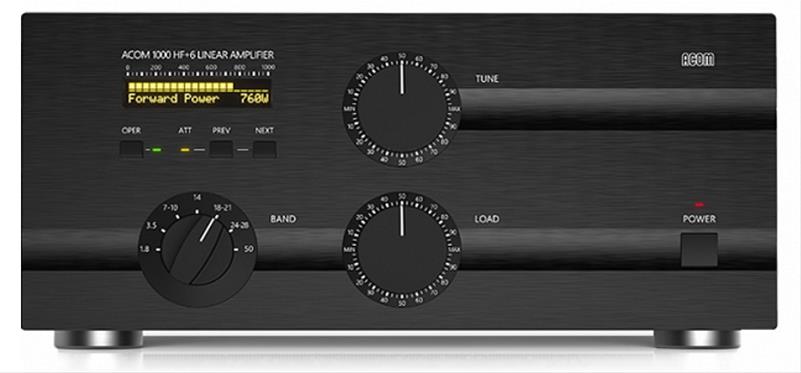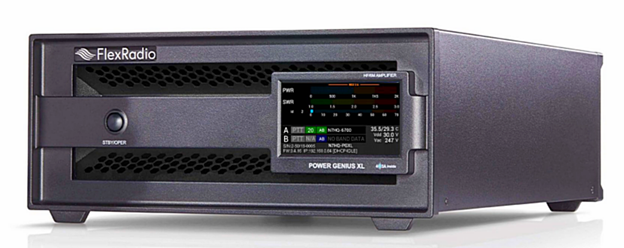Everyone wants to improve their signal quality, work more DX stations, make more QSOs, and earn higher contest scores.
Should you buy an amplifier or beef up your antenna system?
Both are good ideas, but is amping up worth the additional investment?
What’s in Your Ham Station?
For starters, let’s assume that you have a typical shack. Your 100W transceiver connects to a coax-fed dipole (or several) through a built-in or external antenna tuner. Thanks to the tuner, your rig can put out full power regardless of actual antenna/feedline SWR on the various bands you work. You use the same basic setup as most of your ham friends and the guys in the local radio clubs.
If everyone has been using this setup, it must be good, right? Maybe, maybe not. You tune in some stations calling CQ, but for some reason they don’t always answer your reply. Maybe it’s band conditions, or a stronger station is overpowering your signal. Shouldn’t it be easier than this?
You pause for a moment and dream about adding an Acom 1000 HF+6 Meter Linear Amplifier to your station (see below). Certainly, 1kW will help you kick butt in a DX pileup and let you cut though all the noise and interference. Flip the switch, tune, and be heard!
Then reality sets in and you go back to making calls with your 100W radio.

Although you may not know it, you can likely get more signal for a lot less money. Rather than shelling out thousands for an amp up front, I’d suggest you try a three-step approach to getting your signal heard. Utilizing all three will get you the best results in the long run, but you may find improving your antenna system is enough.
***
A 3-Step Approach for Improving Your Ham Radio Signal
***
Step 1: Skill vs. Brute Force
Anyone can fire up a monster amplifier and generate a loud signal—and many do. It doesn’t take a whole lot of skill to muscle your way through a pileup with a legal-limit amp and snag that rare station.
But you can also practice your operating skills, which won’t cost you a thing.
Skill has tangled with brute force for a long time. Take the Marvel Universe, for instance. The Hulk relies on brute force, fueled by anger. His strength continues to increase until he’s strong enough to take out his enemy. In contrast, Captain America has skills like marksmanship and martial arts, and is an expert tactician and field commander.
Point is, although Captain America is an enhanced soldier, those skills are really his superpower—so develop your operator superpowers and make yourself heard!
One strategy I learned is to transmit on a frequency slightly above the main pileup or the last station worked. The DX station will often explore the upper edge of a pileup if he can’t pick out calls from the main section of the pile.
Another is to delay for a second or so sending your call so the last letter or two extend past the main buzz of the pileup. In my case, the station would then hear the “SH” and send “SH?” Then I send my call again and make the QSO. Timing is everything.
Also, CW and digital modes will give you significantly more mileage than SSB. Generally, they work well at power levels of 100W or less, but you should use 30W or less for digital to keep from damaging your finals.
Step 2: Budget-Friendly Renovations
Consider updating your antenna system as the next step to improving your signal. One way to improve your signal is to move antennas higher in the air. Build a taller mast, find a taller tree, or put up a tower.
If that dipole just isn’t cutting it, try a new secret weapon—a full-wave horizontal loop set as high as possible. Feed it with coax and use a tuner on bands above the fundamental frequency. That’s a quick and relatively easy way to snag an extra 2 to 10 dB, depending on frequency.
Changing the feedline can mean more dBs. Disconnect the coax feedline from your dipole and replace it with 450-ohm ladder line. By using low-loss 450-ohm line you’ll likely experience a 6 to 20 dB increase.
If coax feed is your only option, upgrade to a lower-loss coax. For example, you’ll gain 0.7 dB by switching from RG-8X to 400Max and 1.3 dB by replacing RG-58 with RG-8X–based on 100 feet @30MHz. Minimize the number of connectors, switches, and adapters in your feedline system to prevent additional loss.
For less than the price of an entry-level amplifier, you can buy a Cushcraft A3S tri-band beam antenna and a medium-duty rotator. This pair, mounted reasonably high above ground, will offer a 5 to 7 dB steerable improvement to your signal. By rotating a directional antenna, you can often achieve a twofer—boosting the signal you’re trying to receive while attenuating unwanted signals.
On SSB, activate your rig’s speech processor with the proper settings. There’s another 3 dB (or more) improvement, this time in the modulation department—no purchase necessary.
Step 3: Power Trip
If you can hear people but they can’t hear you, it may be time to consider an amplifier. Most amateur radio operators find that when they use a reasonable antenna system, 500 to 800W of amplifier output is usually enough power. These midrange amplifiers also use readily available 120 VAC, so there’s no need to add a 240VAC line to your shack.
An amplifier that produces 750 to 800W of output power will have a 9 dB gain advantage over the 100W signal, which is about 1 1/2 S units. If you go from 750 to 1,500W, you will have a 3 dB advantage, which is only one half of an S unit. So why go to 1,500W? If you are in a DX pileup, that 3 dB may be enough for you to be heard over the other stations.
If you operate on the lower bands—160 or 80m—there’s an added reason to get yourself an amp. Manmade and atmospheric noise can make communicating a challenge. The primary problem is thunderstorm activity. It creates radio noise that is reflected off the ionosphere just like regular radio signals. I’ve participated in nets on both 160 and 80m and recommend using an amp capable of 1 kW or more for reliable communications.
Wait…There’s More
Buying a new amp has a domino effect. You’ll need a beefier antenna tuner and wattmeter to handle the increased power, not to mention upgrading your antenna system to accommodate the extra power. A 240VAC line is mandatory for larger amps running at full power. Materials and an electrician to install them will likely run several hundred dollars more.
Keep in mind that once you have the power, you’ll want more—not less. You’ll also note that even a basic 500 to 800W amplifier will set you back $1,500 or more. Buy the best you can afford and use it responsibly.
Here are some amplifier candidates to consider at DXEngineering.com, including the FlexRadio Power Genius XL below.

To Buy or Not to Buy a Ham Radio Amplifier
After looking at the facts, how much improvement does your station need? As always, the choice is yours. Amplifiers are the final option, especially after you’ve honed your skills and tweaked your antenna farm. Add a 10 dB amplifier to a 7 dB beam antenna and you’ve got a 17 dB improvement in signal strength.
When conditions are poor, an amp can make the difference between being heard and being lost in the noise.

